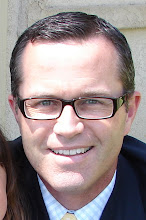The image I've been thinking about to illustrate this is the difference between a rest stop and cul-de-sac. The former is a place where you stretch your legs, make a pit-stop, think about your route - how far you've come, how far you have to go, when you'll need fuel, food, another break, etc. And, all in plain view of the road that is going to take you there. At a rest stop, we never lose sight of the action, the context, the flow - we just step out of it for a little while to get better prepared to re-enter in a new way.
A cul-de-sac is a dead end. It is anti-flow. It's a termination point typically arrived at after multiple changes in direction (wandering) away from a primary route. I don't know of too many cul-de-sacs from which you can still see the main artery. Of course, this is not universally bad, but in the context of professional development activities, it's a disaster. When we find ourselves in a developmental cul-de-sac it means we are colluding to separate ourselves from the larger question of how this specific work is connected to business needs. Of how my getting better is going to matter. The job of a good coach or facilitator is to allow enough wandering to feed the creative process but not so much that we just feel good and tell ourselves that it's productive.
What it really comes down to is the desire to change. If we have it, rest stops are obvious. We know we need them and we know that they are a means to an end, not an end in themselves. If we don't have the desire we are more likely to end up in cul-de-sacs, following clever routes of disconnection and denial, wondering if someone will show us the way but secretly hoping no one asks how we ended up in this part of town.

No comments:
Post a Comment